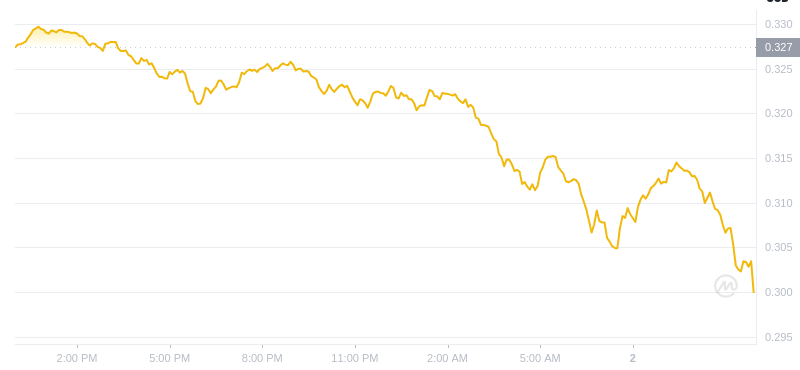You can also read this news on COINTURK NEWS: Founder of Europe’s Oldest Crypto Fund Labels Bitcoin as a Meme Coin
您也可以在 COINTURK NEWS 上閱讀此新聞:歐洲最古老的加密貨幣基金的創始人將比特幣標記為模因幣
Justin Bons, Founder and CIO of Europe’s oldest crypto fund Cyber Capital, is known for his sharp remarks on Twitter. In a statement dated January 29, he ignited an interesting debate by describing Bitcoin (BTC) as a meme coin.
歐洲最古老的加密貨幣基金 Cyber Capital 的創始人兼首席資訊長賈斯汀·邦斯 (Justin Bons) 以其在 Twitter 上的尖銳言論而聞名。在 1 月 29 日的聲明中,他將比特幣 (BTC) 描述為一種迷因幣,引發了一場有趣的辯論。
Bons’ Perspective on Bitcoin
Bons 對比特幣的看法
While presenting his claims about Bitcoin, Bons grounded them in his own views. He pointed out that Bitcoin operates within a structure similar to meme coins, highlighting a lack of “purpose and serious benefit.”
在提出他對比特幣的主張時,邦斯以自己的觀點為基礎。他指出,比特幣的運作結構類似於迷因幣,強調缺乏「目的和重大利益」。
Not stopping there, the founder of Cyber Capital also pointed out Bitcoin’s low scalability and expressed criticism. He emphasized Bitcoin’s maximum capacity of 7 transactions per second (TPS). On the other hand, Justin Bons addressed the issue of “programmability” for the leading cryptocurrency, stating that BTC has “no benefit.”
不僅如此,Cyber Capital創始人還指出了比特幣可擴展性較低的問題並提出了批評。他強調比特幣的最大容量為每秒 7 筆交易(TPS)。另一方面,賈斯汀·邦斯(Justin Bons)談到了領先的加密貨幣的「可編程性」問題,表示比特幣「沒有任何好處」。
These claims were not the first comments made by the well-known figure. Bons had made similar statements in previous writings.
這些說法並不是這位知名人士第一次發表評論。邦斯在先前的著作中也曾發表過類似的言論。

Bitcoin and Meme Coins
比特幣和模因幣
On the other hand, the concept of ‘memecoin’ also shone with Dogecoin (DOGE), a derivative of the “Doge” meme coin that became popular in internet forums in 2013. Wikipedia defines meme coins based on multiple sources as follows:
另一方面,「迷因幣」的概念也因狗狗幣(DOGE)而大放異彩,它是「Doge」迷因幣的衍生品,於2013 年在網路論壇上流行起來。維基百科基於多種來源對迷因幣的定義如下:
A meme coin (also spelled memecoin) is a cryptocurrency that originates from an Internet meme or has another humorous characteristic. In the broadest sense, it can be used as a critique of the entire cryptocurrency market – those based on specific memes like “doge coins,” celebrities like Coinye, and pump-and-dump schemes like BitConnect – or it can be used to make cryptocurrency more accessible. This term is often used to belittle the value or performance of these cryptocurrencies in comparison to mainstream cryptocurrencies. On the other hand, supporters observe that some meme coins have become social currencies with high market values.
迷因幣(也拼寫為 memecoin)是一種源自網路迷因或具有其他幽默特徵的加密貨幣。從最廣泛的意義上來說,它可以用來批評整個加密貨幣市場——那些基於“doge coin”等特定模因、Coinye 等名人以及BitConnect 等拉高拋售計劃的市場——或者它也可以用來製造加密貨幣更容易取得。該術語通常用於貶低這些加密貨幣與主流加密貨幣相比的價值或性能。另一方面,支持者觀察到一些迷因幣已成為具有高市值的社交貨幣。
Following Dogecoin’s success, dozens of meme coins climbed to the top through rumors, price surges, and social acceptance. These coins are known for their high participation and for gathering strong, passionate communities around them.
隨著狗狗幣的成功,數十種迷因幣透過謠言、價格飆升和社會接受度登上頂峰。這些代幣以其高參與度和聚集強大、熱情的社區而聞名。
After Dogecoin, meme coins such as Shiba Inu, PEPE, Floki, and most recently BONK have attracted significant attention from market participants.
繼狗狗幣之後,柴犬、PEPE、Floki 以及最近的 BONK 等迷因幣吸引了市場參與者的極大關注。
The post first appeared on COINTURK NEWS: Founder of Europe’s Oldest Crypto Fund Labels Bitcoin as a Meme Coin
該帖子首次出現在 COINTURK 新聞上:歐洲最古老的加密貨幣基金的創始人將比特幣標記為模因幣


 Optimisus
Optimisus TheCoinrise Media
TheCoinrise Media DogeHome
DogeHome Optimisus
Optimisus BlockchainReporter
BlockchainReporter Optimisus
Optimisus Thecoinrepublic.com
Thecoinrepublic.com TheCoinrise Media
TheCoinrise Media Optimisus
Optimisus






















